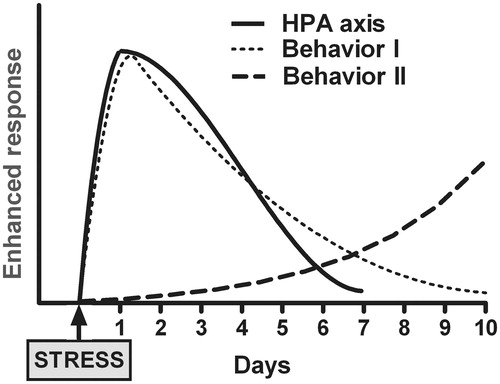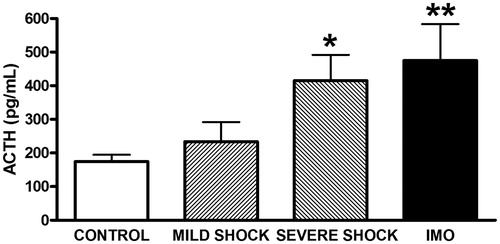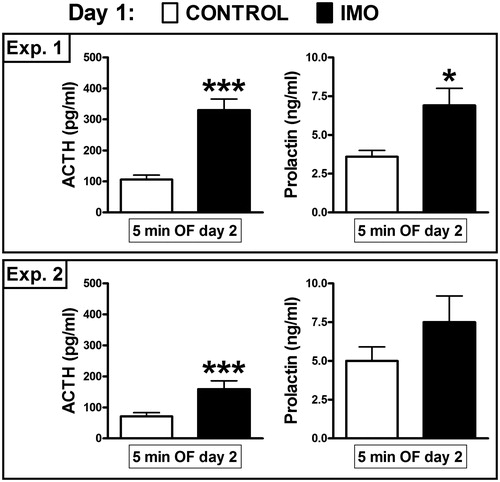Figures & data
Figure 1. Exposure to severe emotional stressors can induce HPA and behavioral sensitization. HPA sensitization is maximally observed on the day after the stressors and can persist for up to 2 weeks depending on the characteristics of the stressor and the individual susceptibility (solid line). Behavioral consequences of stressors belong to two categories: (i) one that showed a maximum very soon after stressor exposure to progressively vanishing after that (Behavior I; dotted line); and (ii) another that are fully manifested long after stressor exposure showing some kind of incubation process (Behavior II; dashed line). Note that behavioral sensitization can be unmasked by superimposing a brief stressor, appears to be longer lasting than HPA sensitization and is usually reflected in different types of tests related to fear conditioning and anxiety-like behavior (i.e. elevated plus-maze, acoustic startle response).

Figure 2. Long-lasting HPA sensitization is dependent on the intensity and/or duration of exposure to the triggering stressor. Adult male rats remained undisturbed or were exposed to a brief 5 min session of low intensity foot-shocks (3 × 3 s scrambled, AC current, shocks of 0.5 mA), a prolonged (120 min) session of high intensity foot-shocks (120 × 6 s scrambled, AC current, shocks of 2.0 mA) or 120 min of immobilization on boards (IMO). Seven days later all animals were exposed for 5 min to an open-field and immediately blood sampled. Means and SEM are represented (n = 8 per group). *p < 0.05, **p < 0.01 versus control.

Figure 3. Prior acute stress induces null or weak prolactin sensitization. In contrast to the consistent sensitization of the HPA response to a brief heterotypic stressor caused by a single exposure to immobilization (IMO, 2 h) on the day before (Belda et al., Citation2012), prolactin response is only slightly enhanced, the results being statistically inconsistent among the different experiments. Panels A and B present results from representative experiments that always show consistent HPA sensitization and inconsistent prolactin sensitization. Means and SEM are represented (n = 10–12 per group). *p < 0.05, ***p < 0.001 versus control.

